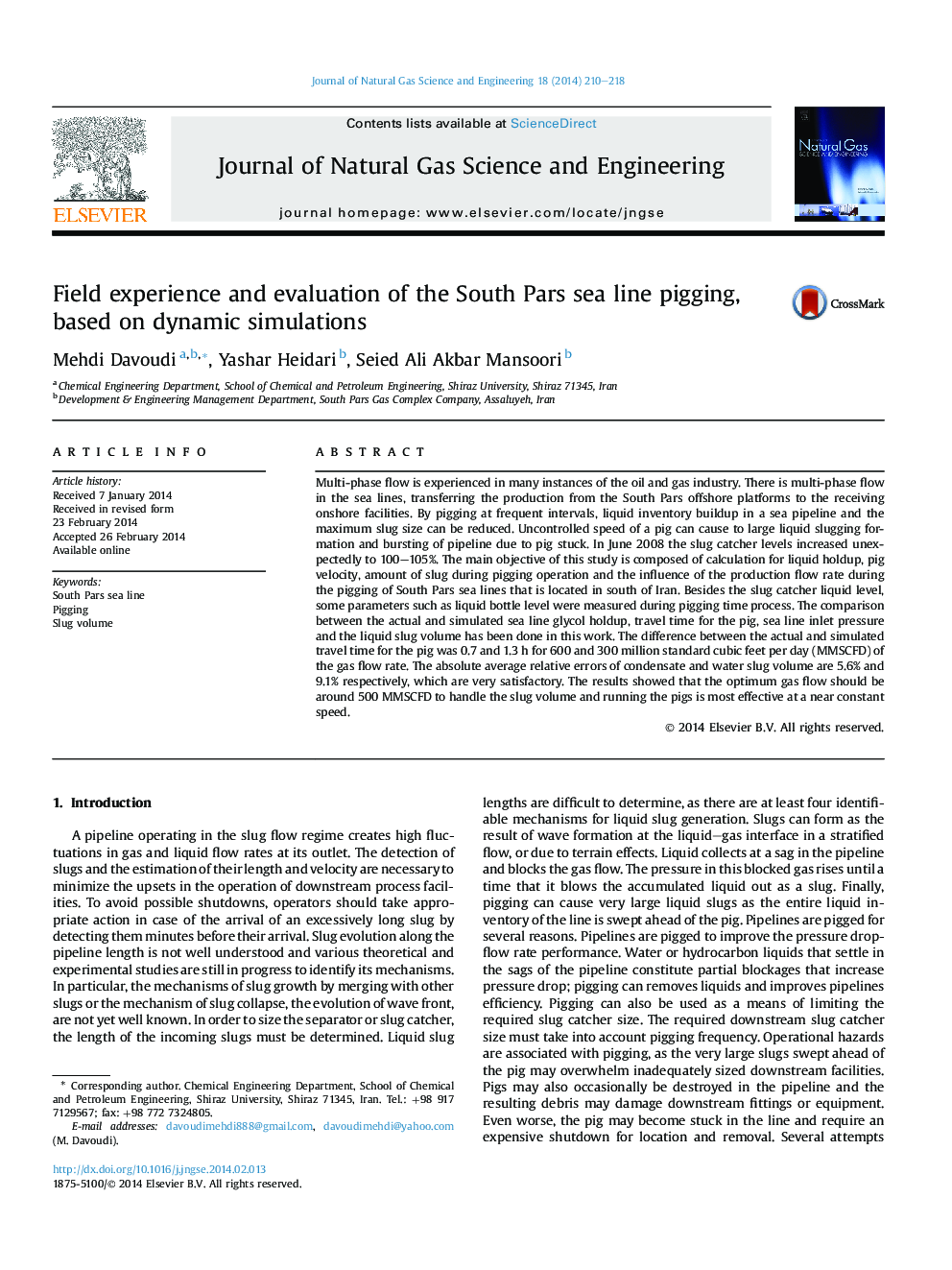| Article ID | Journal | Published Year | Pages | File Type |
|---|---|---|---|---|
| 1757931 | Journal of Natural Gas Science and Engineering | 2014 | 9 Pages |
Abstract
Multi-phase flow is experienced in many instances of the oil and gas industry. There is multi-phase flow in the sea lines, transferring the production from the South Pars offshore platforms to the receiving onshore facilities. By pigging at frequent intervals, liquid inventory buildup in a sea pipeline and the maximum slug size can be reduced. Uncontrolled speed of a pig can cause to large liquid slugging formation and bursting of pipeline due to pig stuck. In June 2008 the slug catcher levels increased unexpectedly to 100-105%. The main objective of this study is composed of calculation for liquid holdup, pig velocity, amount of slug during pigging operation and the influence of the production flow rate during the pigging of South Pars sea lines that is located in south of Iran. Besides the slug catcher liquid level, some parameters such as liquid bottle level were measured during pigging time process. The comparison between the actual and simulated sea line glycol holdup, travel time for the pig, sea line inlet pressure and the liquid slug volume has been done in this work. The difference between the actual and simulated travel time for the pig was 0.7 and 1.3Â h for 600 and 300 million standard cubic feet per day (MMSCFD) of the gas flow rate. The absolute average relative errors of condensate and water slug volume are 5.6% and 9.1% respectively, which are very satisfactory. The results showed that the optimum gas flow should be around 500 MMSCFD to handle the slug volume and running the pigs is most effective at a near constant speed.
Keywords
Related Topics
Physical Sciences and Engineering
Earth and Planetary Sciences
Earth and Planetary Sciences (General)
Authors
Mehdi Davoudi, Yashar Heidari, Seied Ali Akbar Mansoori,
